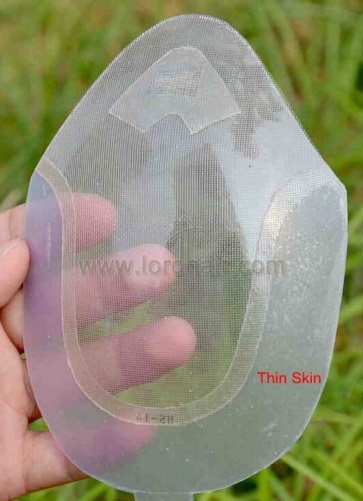When you choose base designs, you often see two names – PU and Thin Skin. You may get confused about them and want to know their differences and advantages. To help you out, let’s talk about them here.
PU
PU is the abbreviation of “polyurethane”. After liquid polyurethane is used to coat lace or mono material, it is dried in special equipment creating a PU base. PU is overlaid on lace or mono. Below is a base with PU on sides and back. We can see the mono material through the PU.

Thin Skin
Thin skin is a piece of material made of polyurethane (Broadly speaking, thin skin is a kind of PU). It is not coated on but connected to lace or mono material. Below is a base with thin skin on sides and back. We can see the thin skin is connected to the mono, with only a narrow connection strip. We can’t see mono through the thin skin. Thin skin can be used for the whole base.

To distinguish if it’s PU or thin skin on base, you can see if it is overlayed on lace or mono, or connected to lace or mono. There is no big difference between PU and thin skin for use purposes; they are both used to reinforce the durability of the base making it easier to apply tape or glue an make cleaning easier. Hair can be knotted by single knots, single splits knots, reverse split knots, double knots, etc. using either of these bases.
 Listen to the full text
Listen to the full text

